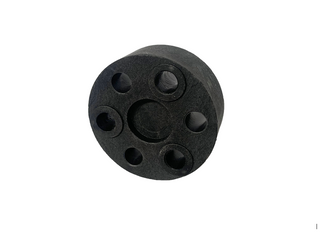Supercharger Visual Inspection Service- Service 2
Service Description:
This inspection covers a complete visual and mechanical assessment of your Whipple supercharger FRONT FEED Compressor unit. The inspection fee includes full disassembly of the supercharger ("blower") to visually and mechanically inspect each critical component. This service is essential for diagnosing performance issues, performing preventative maintenance, or verifying the unit’s condition prior to rebuild or reinstallation.
What’s Included in the INSPECTION SERVICE 2 Inspection:
External Condition:
We begin by inspecting the compressor housing for cracks, corrosion, or deformation. Oil seepage is checked around the input shaft, case seams, and drain plug. All external fasteners are verified for proper torque and tightness. Mounting flanges and mating surfaces are examined for any damage or wear that could affect sealing and alignment.
Input Shaft & Drive Coupling:
The input shaft is manually rotated to confirm smooth operation. We check for both radial and axial play, and listen or feel for any roughness, grinding, or notching. If a coupler is fitted, it is inspected for excessive slop, wear, or internal movement. The input shaft seal is checked for oil leaks or signs of degradation.
Rotor Assembly (Visual Inspection No Disassembly):
With the supercharger opened, the rotors or impellers are carefully examined. We assess for surface scoring, galling, rub marks, and any signs of tip contact. Broken blades or lobes are noted, and clearances are reviewed to confirm there are no signs of internal interference. If the rotors are coated, we also assess the coating’s integrity and condition.
Internal Bearings:
Bearings are rotated by hand to detect any roughness or bearing noise. If the unit is operable, further assessment is made during idle or light load conditions to listen for high-pitched noise or grinding. We inspect for endplay or looseness in the shaft bearings, and where possible, we check the drained oil for metal shavings or contaminants that may indicate bearing failure.
Oil System (for self-contained units):
Oil level is checked using a sight glass. The oil condition is visually assessed—clean oil typically appears amber or synthetic-clear, while bad oil may appear dark, smell burnt, or show milky contamination. We drain the oil to check for metal particles, sludge, or water ingress, all of which can point to internal wear or sealing issues.
Seals & Case Integrity:
All gasket mating surfaces are checked for signs of oil leaks or seal failure. The front and rear shaft seals are inspected for seepage or deterioration. The breather vent, where fitted, is examined for signs of blockage or oil carryover.
Final Report & Recommendation
Following the inspection, we issue a written report detailing the condition of the supercharger. This includes specific notes on any wear, internal damage, or concerns discovered during the assessment. Recommendations are provided based on findings, whether the unit is suitable for continued use, requires component replacement, or should undergo a full rebuild.









